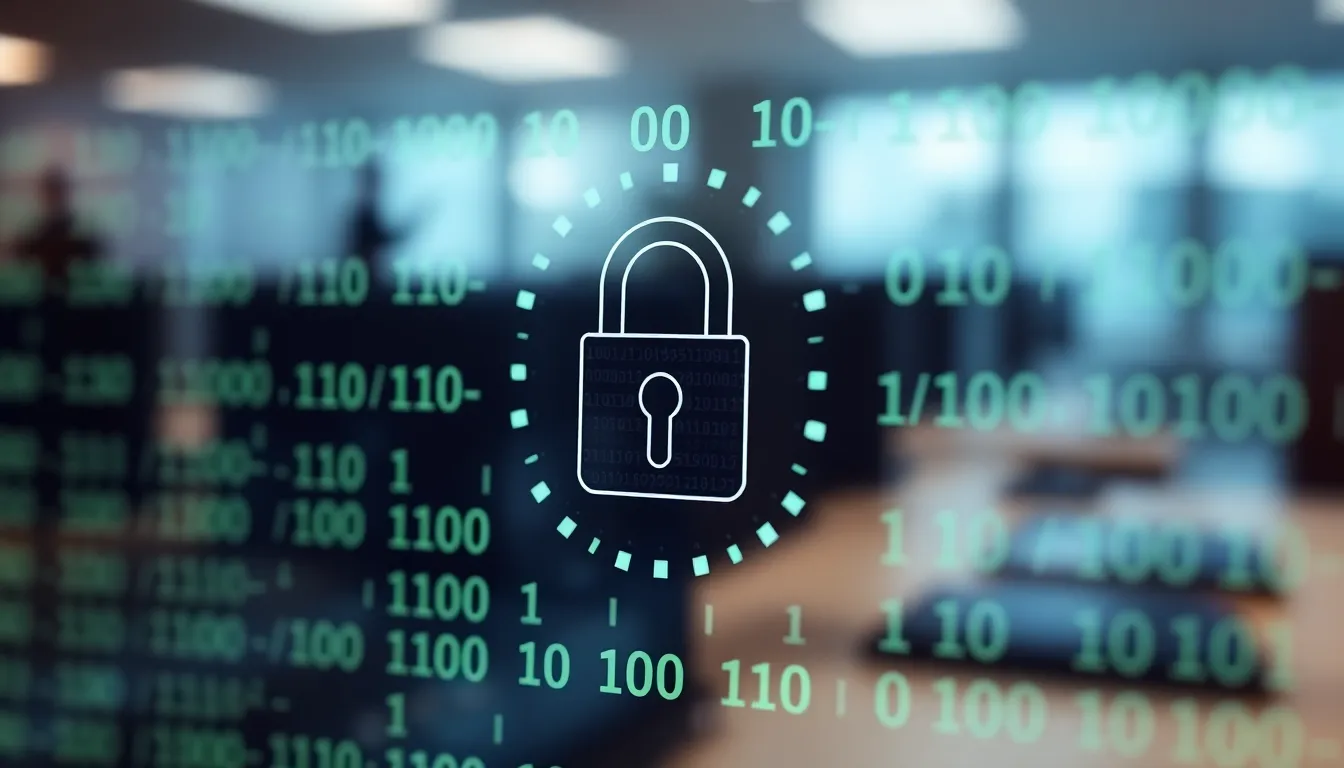In a world where everything from cat videos to banking info lives online, digital security isn’t just a buzzword—it’s a necessity. Imagine leaving your front door wide open while you grab a latte; that’s what it feels like to neglect your digital defenses. With cyber threats lurking like pesky mosquitoes at a summer picnic, understanding digital security is crucial for everyone, from tech whizzes to the average Joe.
What Is Digital Security?
Digital security refers to the measures taken to protect computers, networks, and data from unauthorized access or attacks. Cyber threats can come from various sources, including hackers, malware, and phishing scams. Organizations and individuals must implement strategies to safeguard their information against these threats.
Key components of digital security include encryption, firewalls, and access controls. Encryption protects data by converting it into a code that is unreadable without a specific key. Firewalls act as a barrier between a trusted internal network and untrusted external networks. Access controls ensure that only authorized users can access sensitive information.
Training increases awareness about potential threats and best practices for online safety. Educated users are less likely to fall victim to phishing attempts or other social engineering tactics. Regular updates of software and systems also play a vital role in maintaining security. These updates often contain patches that fix vulnerabilities, preventing exploitation.
Data breaches can have severe consequences, including financial loss and reputational damage. Statistics show that over 50% of small businesses experience cyber attacks annually. The growing reliance on technology emphasizes the need for robust digital security measures.
Overall, digital security is crucial in today’s connected world. It requires a proactive approach that includes technology, user education, and continuous evaluation of security protocols. Embracing this proactive mindset empowers individuals and organizations to protect their digital assets.
Key Components of Digital Security

Digital security comprises various essential elements that work collectively to protect data and networks from cyber threats. The following components are crucial for maintaining robust digital security.
Data Encryption
Data encryption secures information by converting it into an unreadable format, thereby preventing unauthorized access. This process ensures that only authorized parties with the correct decryption key can access the original data. Organizations also rely on encryption to protect sensitive information during transmission and storage, reducing the risk of interception by hackers. For example, HTTPS encrypts data exchanged between a user’s browser and a website, adding a layer of security essential for online transactions. By implementing encryption, businesses fortify their data against breaches and maintain customer trust.
Authentication Methods
Authentication methods verify users’ identities before granting access to sensitive data or systems. Common techniques include passwords, biometric scans, and two-factor authentication (2FA). Passwords require users to create unique phrases or codes, while biometric options utilize fingerprints or facial recognition for added security. Two-factor authentication combines something the user knows (password) with something the user possesses (a mobile device), enhancing protection against unauthorized access. Organizations prioritize implementing strong authentication methods to reduce the risk of identity theft and unauthorized intrusions.
Firewalls and Intrusion Detection
Firewalls and intrusion detection systems play critical roles in network security. Firewalls serve as barriers that monitor incoming and outgoing traffic, blocking unauthorized access while allowing legitimate communications. Intrusion detection systems continuously scan for signs of malicious activity and alert administrators when potential threats arise. These systems work in tandem to create a robust security posture that prohibits unauthorized access and identifies vulnerabilities early. Together, firewalls and intrusion detection measures minimize the risk of a security breach and protect valuable digital assets.
Common Threats to Digital Security
Digital security faces numerous threats that can compromise sensitive information and systems. Understanding these risks is crucial for effective protection.
Malware and Ransomware
Malware refers to malicious software designed to harm, exploit, or gain unauthorized access to systems. Notably, ransomware encrypts files and demands payment for their release. Businesses often suffer significant downtime and financial loss due to such attacks. Regular software updates and antivirus tools help combat malware, while heightened awareness promotes user vigilance against suspicious downloads. Companies must also conduct staff training to recognize potential threats, as over 58% of ransomware attacks target small businesses.
Phishing Attacks
Phishing attacks involve deceitful tactics to obtain sensitive information, such as usernames and passwords. Cybercriminals often use emails or messages that appear legitimate to trick users. Reports indicate that nearly 91% of successful data breaches start from phishing emails. Protecting against these scams requires user education and awareness of common signs, such as generic greetings or urgency in requests. Email filters can also reduce risks, helping to block such malicious communications before they reach inboxes.
Data Breaches
Data breaches occur when unauthorized individuals gain access to confidential data. These incidents can involve large-scale theft of personal information or corporate secrets. Statistics reveal that more than 4.1 billion records were exposed in the first half of 2020 alone. Implementing robust security measures, like encryption and access control, significantly reduces the impact of potential breaches. Organizations must regularly assess their security practices and have response plans in place for swift action following a breach.
Best Practices for Enhancing Digital Security
Enhancing digital security involves several best practices that individuals and organizations can implement to protect their assets.
Strong Password Policies
Developing strong password policies is crucial. Passwords should be at least 12 characters long, combining upper and lower case letters, numbers, and special characters. Encouraging the use of unique passwords for different accounts minimizes vulnerability. Regularly changing passwords adds an extra layer of security. Organizations could implement password managers to assist employees in maintaining complex passwords. A study revealed that over 80% of data breaches exploited weak or stolen passwords.
Regular Software Updates
Regular software updates ensure systems are protected against known vulnerabilities. Updates often include security patches that address potential threats. Installing updates promptly, rather than delaying, helps mitigate risks significantly. Automating this process can also relieve the burden on users. Many cyber threats target outdated software, so relying solely on initial installation is insufficient. Recent statistics indicate that over 50% of breaches were linked to unpatched software vulnerabilities.
Employee Training and Awareness
Employee training boosts overall security posture. Regular workshops and training sessions educate employees about identifying threats like phishing scams. Reinforcing the importance of cybersecurity habits, such as cautious email handling, can reduce risks. Engaging employees in simulated phishing exercises enhances recognition skills effectively. Organizations must foster a culture of security awareness. Research shows that companies with robust training programs experience up to 70% fewer successful attacks.
Conclusion
Digital security isn’t just a technical concern; it’s a vital necessity for everyone in an increasingly connected world. By understanding the threats and implementing robust security measures, individuals and organizations can effectively safeguard their valuable data.
Strong passwords regular updates and user education form the backbone of a solid security strategy. As cyber threats continue to evolve staying informed and proactive is key. Embracing comprehensive digital security practices ensures that sensitive information remains protected from unauthorized access and potential breaches.
In this digital age prioritizing security is essential for maintaining trust and integrity in online interactions.











